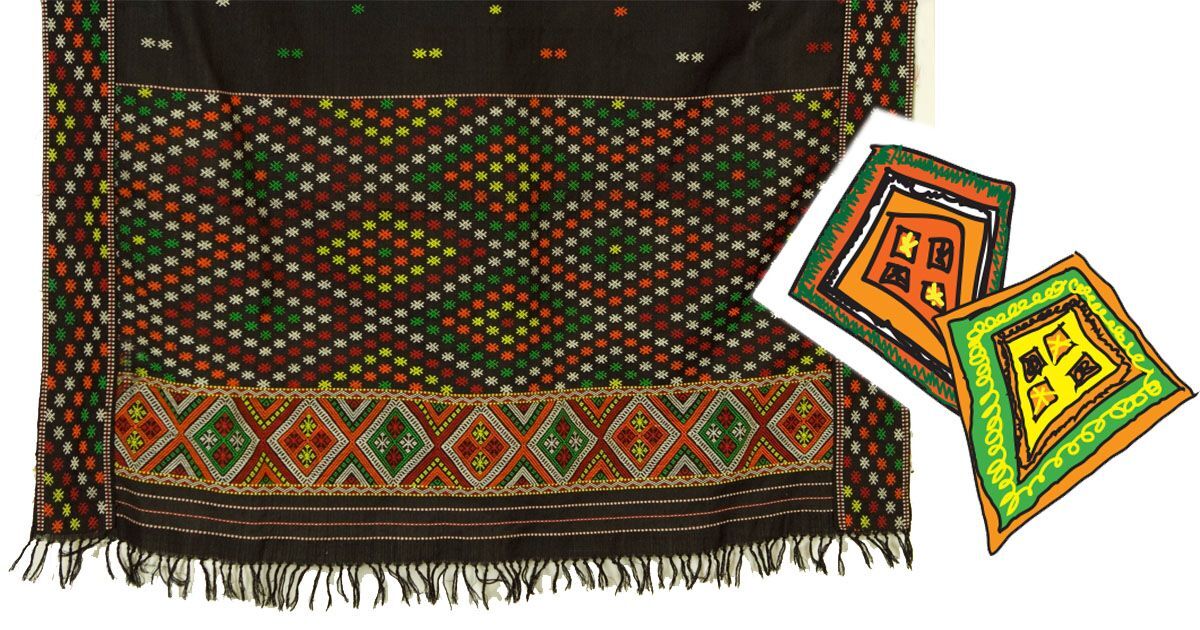
CULTURE - Nasreen Habib

Apart from the Mishing people’s love for the river, their other enduring love is for weaving.
Unlike in the days when we were growing up in the 1990s, mekhela-sadors, nowadays, have moved away from sedate mugas and pristine paats. Mishing, Karbi, and Bodo sadors are freely mixed with muga and paat mekhelas to create a more eclectic canvas. In the midst of much socio-political turmoil in the State, this can also be seen as an attempt to build a broader pan-Assamese society. The Mishing weave, in particular, known for its unique geometric design and bold colours, has a special place in every young Assamese girl’s festive wardrobe. Well-known brands like Fab India have also zeroed in on its market potential for a pan-Indian market. But, for the weavers of the community, this new-found acceptance has not led to prosperity or growth, many of whom are leaving the loom to take on more profitable work, or to devote more time to household work.
Add to it the spectre of COVID-19 and a more sombre picture emerges. Hardly a month had passed by after the nationwide lockdowns and Appun Doley, a young mother and an accomplished weaver from Upper Assam’s North Lakhimpur district, was already running out of thread. She had three unfinished mekhela-sadors to be handed over to the baideo who ran the small collective out of her home in Lakhimpur town. Like Appun, there were five other weavers who were dependent on the collective, and worked on the semi-automatic looms, six days a week. Cotton mekhela-sadors (mostly nuni cotton) fetched around Rs. 850 per piece. At best, they could manage four every month as the work involved plotting intricate designs from a ‘Jacquard’ card on to the looms. Appun, however, quietly informs that on a traditional loom, with no cards to rely on for design, it takes even longer, which is why many were graduating over to the semi-automatic looms, readily provided by small-time entrepreneurs who make profits over four times the price paid to the weavers.

Appun’s ancestors, the Mishings, had descended from the hills of Arunachal Pradesh to settle down by the banks of the golden Subansiri. They belong to the greater group of the ‘Tani’ people. Many Tani tribes still live in neighbouring Arunachal Pradesh and Tibet. All the Tani tribes share linguistic, cultural, and ritualistic similarities. The Mishing tribe is the second-largest ethnic and linguistic group of Assam. They form a significant part of the population in the districts of Dhemaji, North Lakhimpur, Sonitpur, Tinsukia, Dibrugarh, Sivasagar, Jorhat and Golaghat. A few members of the Mishing tribe also live in and around Pasighat of the East Siang district of Arunachal Pradesh. They migrated to the plains prior to the advent of the Ahoms, in around the 13th century, and settled on the banks of the Brahmaputra and Subansiri. Consequently, they are also known as the ‘River People’.
Apart from the Mishing people’s love for the river, their other enduring love is for weaving. Every pattern that they weave holds a world of information – on ancestors, social values, clan practices, and much more. Sumi Pegu, another weaver from the collective, says that her designs are primarily inspired by the lush natural beauty all around her, the moon, the stars, and also by the legends of medicine men and the Donyi Polo religion. Mishings are animist by nature. But like any other Tani tribe, they believe the Sun (Donyi) to be their mother and the Moon (Polo) to be their father. One of the recurring patterns in a Mishing weave is the diamond – symbolising a chang ghar, the very symbol of Mishing life. A Mishing chang ghar, a bamboo and thatch house built on a raised platform, stands resolutely against the tumultuous waves of the river and protects its inhabitants from harm. Geometrical patterns are often paired with natural motifs such as trees (gos) to weave magic on the loom. A traditional Mishing loom is made out of bamboo and wood, and both are sacred for the tribe. Even when the household falls on bad days, the loom is never broken down to light the kitchen fire. In the earlier days, weavers used to go into the jungle to look for plants that could be used to naturally dye the threads, but, nowadays, artificially-dyed reels are occasionally used.
The knowledge of weaving has been handed down from generation to generation. There are differences in the way married and unmarried women dress up. Older women use the segreg to wrap around their breasts, while younger girls wear the exquisite ku:pobis to wrap around the body, beneath the armpits, covering the upper part of the body. Mishing women believe that not knowing how to weave brings bad luck. Younger girls are allowed to wrap the xoru-xaal around their waists like playthings to familiarise themselves with the craft. As they grow up, and their fingers are able to deftly hold the taat-xaal, it is time to weave a world of dreams. These dreams though, have seen a sea change over the years. Apart from using market-bought threads, the traditional diamond-shaped motifs are getting smaller in size. While the earlier motifs were hardly meddled with, now designs are made on cardboard cards, according to current trends. The traditional looms are also being replaced with advanced fly shuttle looms and semi-automatic looms, but the changes notwithstanding, the magic of a Mishing weave endures.

